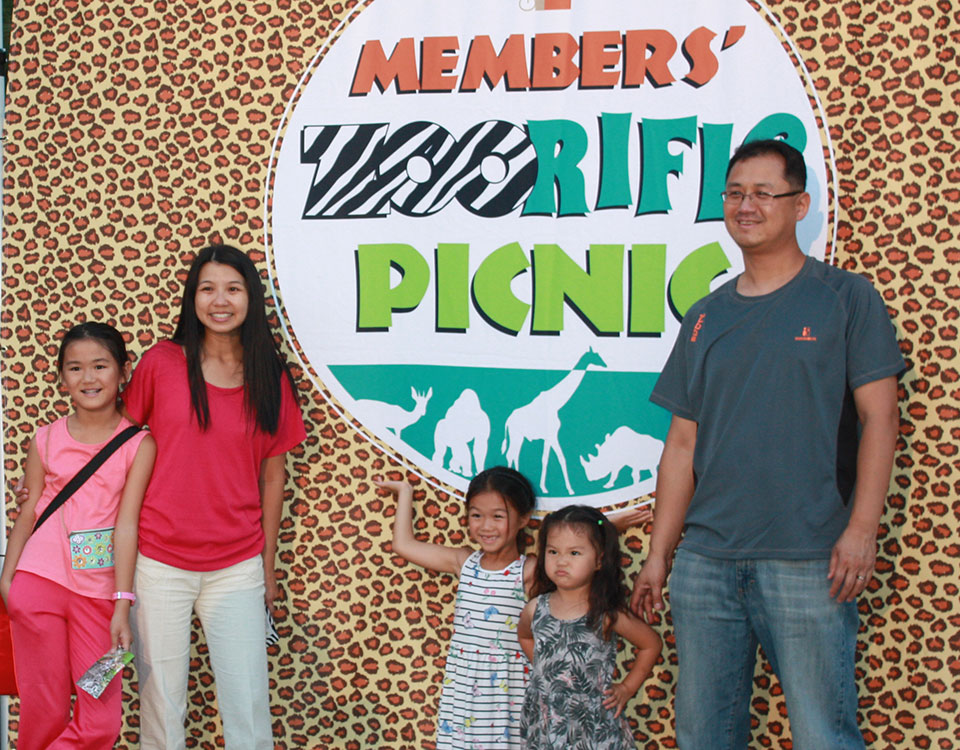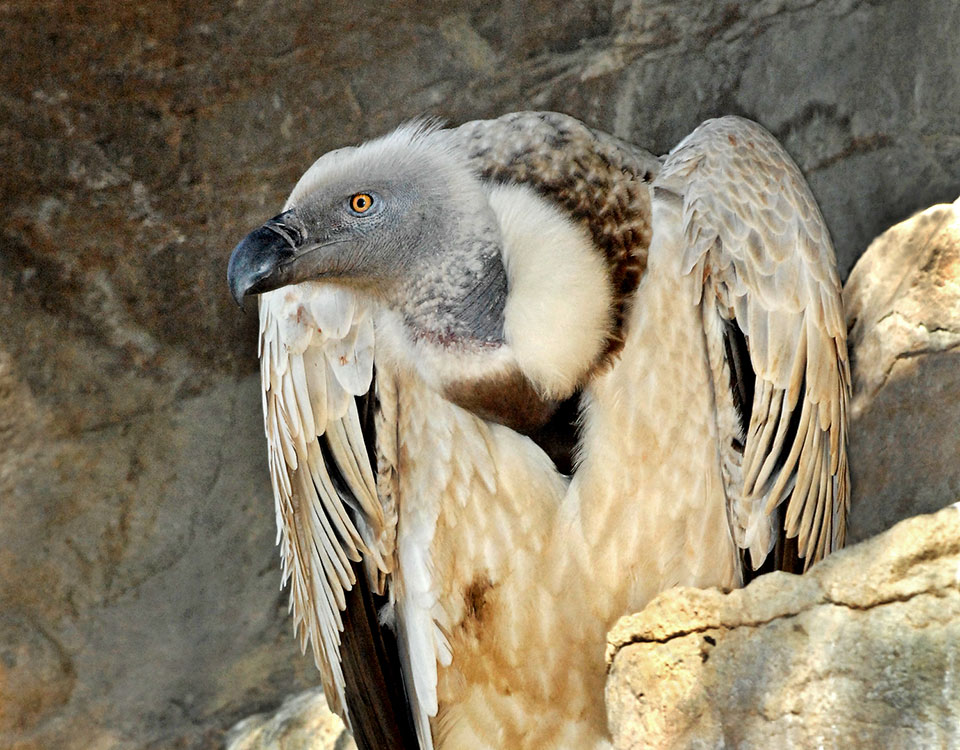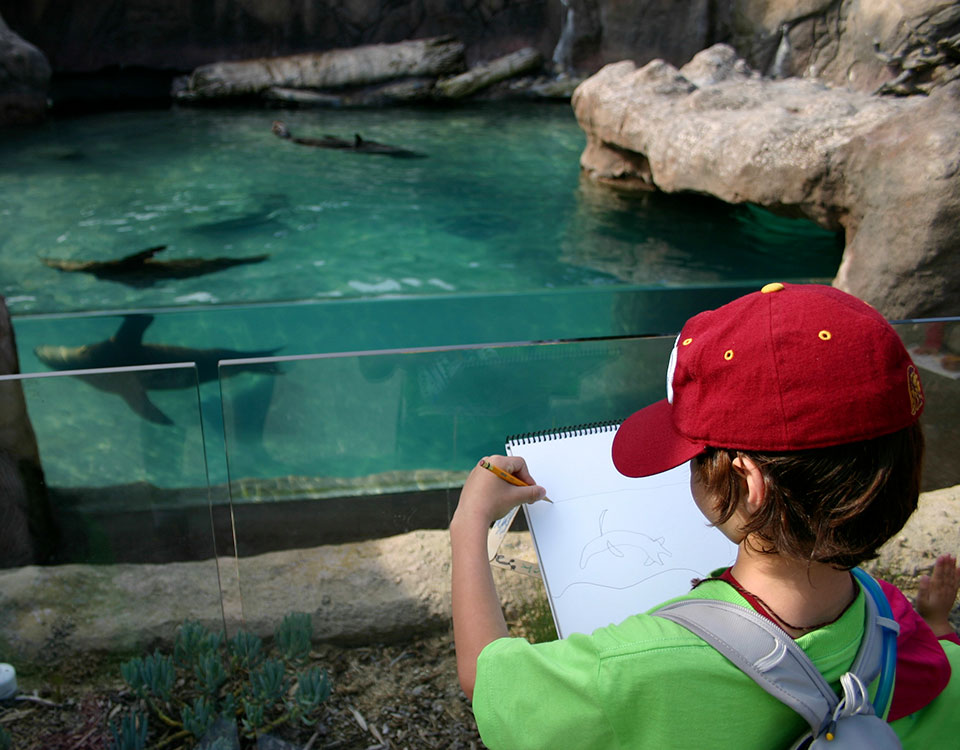New Sea Lion Makes a Splash

Featured Creatures: Vultures
August 31, 2017
Zoorific Picnic a Wild Success, Thanks to Members
August 31, 2017
Rescued and rehabilitated by the Marine Mammal Care Center Los Angeles, this large, easygoing male would not have thrived back in the wild, so the L.A. Zoo welcomed him with "open flippers." Photo by Jamie Pham
Nearly eight years have passed since the Sea Life Cliffs exhibit at the Los Angeles Zoo last echoed with the barking of California sea lions. For anyone who may have forgotten how loud these boisterous pinnipeds can be, the massive male who arrived on May 24 from the Marine Mammal Care Center Los Angeles (MMCC) in San Pedro has provided daily reminders. After announcing his presence from behind the scenes for three months, he made his public debut last week.
Finding Safe Harbor
When MMCC staff responded to reports of a large adult sea lion loitering near populated areas at Manhattan Beach, they found a male that was severely underweight and completely blind due to cataracts in both eyes. Based on the amount of wear on his teeth and the size of his sagittal crest (a bony ridge that many male animals develop on their skulls after reaching sexual maturity), they estimated his age to be about 10 years old.
Pinnipeds – a clade of carnivorous, fin-footed marine mammals that includes all species of sea lions and seals, as well as walruses – are perennially popular with zoo and aquarium visitors, and L.A. Zoo curatorial staff had informed local marine mammal rescue centers of their interest in featuring sea lions once again, together with the harbor seals. So when the big male was deemed non-releasable by the MMCC, staff there notified the Zoo and arrangements were made to transfer him to our Sea Life Cliffs. After he completed quarantine (a period when a new animal is kept separate until various health screenings can be completed), animal care staff began the training necessary to acclimate him to his new home. Typically, blind marine mammals in human care adapt well to vision loss, and he rapidly began mastering the same training and exhibit familiarization that the Zoo’s blind male harbor seal Alfred completed upon his arrival in 2007.
Teaching Buddy the Basics
Soon after his arrival at the L.A. Zoo, the sea lion was dubbed “Buddy” by a Greater Los Angeles Zoo Association donor. His primary trainer, Animal Keeper Andrea Delegal, is currently in the process of teaching Buddy basic behaviors that make caring for him easier and safer for animals and people. So far, he has learned two cues—“water” to return to the pool and “station,” the request for him to pause at a specific location. Sea lions and seals seem to enjoy the interactions with their keepers and often participate in training with great enthusiasm.
Like his exhibit-mate Alfred – who also came to the Zoo from the wild after he was discovered on a beach in New Jersey, underweight and having lost his sight – Buddy is mellow and trusting. Unlike Alfred, he has only one significant scar from his past life. Male pinnipeds in the wild routinely battle for mating rights and have run-ins with sharks and other hazards. Buddy’s unblemished appearance leads keepers to believe that he must have enjoyed a charmed life as a dominant male with few threats. This may also explain his easygoing confidence, which is making his transition to his new home seem effortless—if loud.
A Really Big Buddy
Zoo visitors who remember Rocky, the last sea lion to occupy Sea Life Cliffs, may be surprised at Buddy’s size, weighing in at nearly 700 pounds. Rocky had been neutered as an immature adult, so even though he was bigger than the trio of female sea lions who lived with him, he never reached maximum size and, at his peak, weighed about 500 pounds. By contrast, the much larger Buddy has not been neutered.
Keepers were concerned that once he entered rut—the breeding mode that many male animals enter seasonally—it would be difficult to coax him out of the quarantine pool. Male sea lions bulk up just before going into rut, storing calories in the form of fat so that once mating season commences, they do not have to leave their harems unattended to go out to sea in search of food. This means that food incentives, no matter how tempting, do not work so well at this time. But he ventured out on his own, and the decision was made to follow his lead and let him settle in to the main pool.
It’s a “Buddy Thing”
Like all the other residents of Sea Life Cliffs, Buddy is an individual with his own preferences and quirks, including a fondness for a good scratching session and vocalizing, which Delegal explains is not related to his being in rut or to stress. “It’s just his thing.”
So visit the Zoo today and follow the sound of barking to Sea Life Cliffs to pay a visit to the new pinniped on the block.
What’s in a Name?
GLAZA trustee Lori Samuels named Buddy for her father-in-law, who recently passed away. Many L.A. Zoo animals are available for naming, with donations ranging from $1,000 to $25,000, depending on the species. Each naming is commemorated with a plaque and ceremony at the animal’s exhibit and a VIP tour with a visit from the animal’s caretakers. This important program supports the Zoo’s animal acquisition fund, which promotes vital wildlife preservation and breeding projects here and around the world. For information, contact Patricia Noland via e-mail or by calling 323/644-6035.






